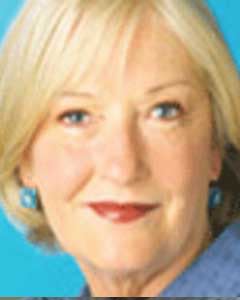Toronto’s Cathedral Church of St. James has mounted a historical overview of the Anglican church’s often painful relationship with Indigenous peoples, as part of an effort to keep alive the momentum generated by the final report of the Truth and Reconciliation Commission (TRC) in May.
Truth and Reconciliation: A Special Exhibit on the Legacy of the Residential Schools is showing daily from 9:00 a.m. to 5:00 p.m. in the cathedral’s east aisle during July and August. The cathedral is located on the northeast corner of Church and King streets.
The idea of an exhibit was supported by Archbishop Fred Hiltz, primate of the Anglican Church of Canada. “The primate was keenly interested, and we thought this was something we could put together fairly quickly,” said Nancy Mallet, cathedral archivist and exhibits committee chair.
But time was scarce. “We wanted the opening to coincide with the start of the Pan Am Games and the influx of visitors, so as soon as [cathedral] Dean [Douglas] Stoute gave his approval, we went to work and finished up the displays in two weeks,” said Mallet.
Starting with “Beginnings,” the exhibit walks viewers through 262 years of Anglican-Aboriginal relations, first established in 1753 when the Rev. Thomas Wood became missionary to the Mi’kmaq people of Atlantic Canada. He spoke of the need to “civilize the barbarians” and to “calm their savage disposition,” a view perpetuated by the Church of England, Prime Minister Sir John A. MacDonald and the government-sponsored, church-run residential schools.
From there the exhibit moves to “Truth,” laying bare the culture-eradicating realities of the schools, with their dismal dormitories, coercive classrooms and child labour. It then passes on to “Apology,” focusing on the landmark remorseful admission of then-primate Archbishop Michael Peers in 1993 that opened the door to today’s efforts at healing and reconciliation.
The exhibit closes on an optimistic note with a very different educational setting from the old residential schools—one that shows contemporary Indigenous children respectfully learning their heritage languages and steeping themselves in their native cultures and values.

The exhibit has been averaging about 400 viewers a day and there have been some high points. The exhibit has attracted many visitors from Latin America who are extremely aware of Aboriginal-European issues, according to Mallett. “And one man from Japan was very interested and spent the greater part of an hour reading every single caption.”
In town to perform throat boxing—a combination of traditional throat singing, hip hop and beat boxing—at the Pan Am festivities, a young Inuit man was reading a commemorative plaque in the cathedral’s narthex. “Suddenly he got very excited and yelled, ‘That’s my grandfather!’ ” said Mallett. The grandfather? The Rev. Armand Tagoona, the first Inuit priest in the Anglican Church of Canada, who was ordained in May 1960 at St. James.
His 21-year-old grandson, Nelson Tagoona from Baker Lake, Nunavut, is considered a pioneer in this new musical genre and a proud role model for Inuit youth.
“He gave us an impromptu performance to show us the difference between traditional throat singing and throat boxing,” said Mallett.
For more information call 416 364 7865 ext. 233 or email archives@stjamescathedral.on.ca
Acknowledging the dark legacy of the Indian residential schools, the stained glass window on the exhibit poster was designed by Métis artist Christi Belcourt and installed in 2012 in the centre block of the Parliament Building in Ottawa. Photo: Courtesy St. James Cathedral







